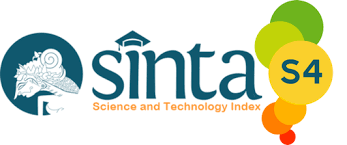Telehealth: Elektronik House Call System, Solusi Mengurangi Biaya Perawatan Kesehatan
DOI:
https://doi.org/10.26630/jkep.v13i2.939Keywords:
Telehealth, ElektronikHousecall System, biaya perawatan, perawatan transisiAbstract
Tuntutan perawatan yang berkelanjutan di era modern semakin meningkat, untuk itu penyedia layanan kesehatan dituntut untuk dapat memberikan perawatan yang berkualitas. Perawatan transisi merupakan layanan yang dibuat untuk memanajemen pasien ketika di rumah atau saat rawat jalan. Bentuk layanan perawatan transisi yang sudah dikembangkan dalam bentuk system elektronik house call di beberapa Negara bagian dapat meningkatkan koordinasi dan kontinuitas perawatan, mengurangi pendaftaran kembali untuk rawat ulang, mengumpulkan umpan balik positif penyedia perawatan, dan menunjukkan manfaat keuangan melalui panjang pendek lama rawat, biaya lebih rendah dari rawat inap, dan dokumentasi yang lebih baik dari kompleksitas pasien.Program ini meningkatkan komunikasi antara penyedia perawatan primer berbasis rumah dan penyedia rawat inap dari semua disiplin ilmu dan memfasilitasi transfer tepat waktu dan akurat informasi pasien yang kritis sehingga biaya perawatan menjadi menurun.
References
Allen, J., Hutchinson, A. M., Brown, R., & Livingston, P. M. (2014). Quality care outcomes following transitional care interventions for older people from hospital to home: a systematic review. BMC Health Services Research, 14(1), 346. http://doi.org/10.1186/1472-6963-14-346
Boling, P. A. (2009). Care transitions and home health care. Clinics in Geriatric Medicine, 25(1), 135–48, viii. http://doi.org/10.1016/j.cger.2008.11.005
Editors, B. (2000, Feb 24). ResourceLink of iowa reports success in reducing health care costs using CYBeRCARE'S electronic housecall system. Business Wire.Retrieved from http://search.proquest.com/docview/445883555?accountid=17242
Kao, H., et al. (2009). The Past, Present, and Future of House Calls.Clinics in Geriatric Medicine 25: 19−34
Ketchersid, T. (2014). Health information technology: help or hindrance? Advances in Chronic Kidney Disease, 21(4), 365–70. http://doi.org/10.1053/j.ackd.2014.02.014
Landers, S., et al. (2005). Trends in House Calls to Medicare Beneficiaries. Journal of the American Medical Association 294: 2435−6.
Ongenae, F., Claeys, M., Kerckhove, W., Dupont, T., Verhoeve, P., & De Turck, F. (2014). A self-learning nurse call system. Computers in Biology and Medicine, 44(1), 110–23. http://doi.org/10.1016/j.compbiomed.2013.10.014.
Ornstein, K., Smith, K. L., Foer, D. H., Lopez-Cantor, M. T., & Soriano, T. (2011). To the hospital and back home again: A nurse practitioner-based transitional care program for hospitalized homebound people. Journal of the American Geriatrics Society, 59(3), 544-551. Retrieved from www.scopus.com.
Saleh, B. S., Nusair, H., AL Zubadi, N., Al Shloul, S., & Saleh, U. (2011). The nursing rounds system: Effect of patient's call light use, bed sores, fall and satisfaction level. International Journal Of Nursing Practice, 17(3), 299-303. doi:10.1111/j.1440-172X.2011.01938.x.
Schwamm, L. H. (2014). Telehealth: seven strategies to successfully implement disruptive technology and transform health care. Health Affairs (Project Hope), 33(2), 200–6. http://doi.org/10.1377/hlthaff.2013.1021.
Downloads
Published
Issue
Section
License
Copyright (c) 2021 Yuli Lestari, Ida Subardiah P

This work is licensed under a Creative Commons Attribution-NonCommercial-ShareAlike 4.0 International License.




